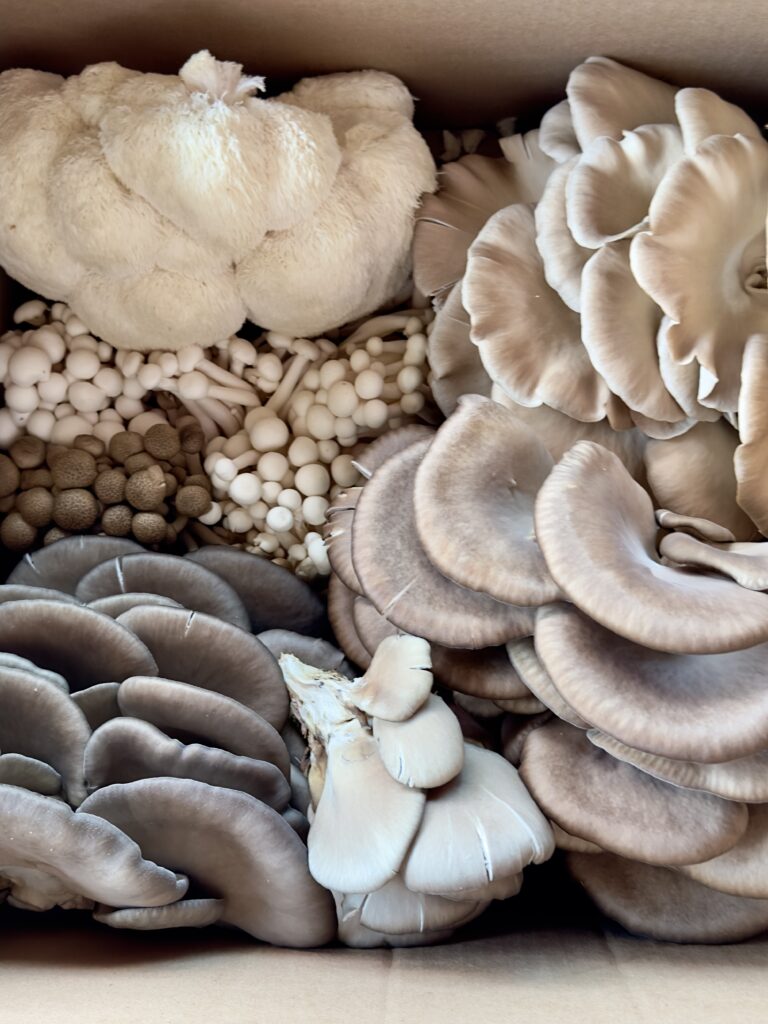
Introduction
Mushrooms are more than just a garnish on your plate—they are among nature’s most extraordinary creations. From ancient medicine to space exploration, mushrooms have captivated humans with their unique abilities and untapped potential. At One Gaia, we believe in unlocking the mysteries of fungi to illuminate the path to personal growth, sustainability, and deeper connections with nature.
The Largest Living Organism on Earth
Most people think of mushrooms as small, fleeting organisms, but the Armillaria ostoyae, or honey fungus, challenges this perception. Found in Oregon’s Blue Mountains, this underground mycelial network spans a staggering 3.5 square miles—roughly the size of 1,665 football fields. Scientists estimate that this “humongous fungus” is over 2,400 years old, making it not just the largest but also one of the oldest living organisms on Earth.
Source: National Geographic
The Internet of the Forest
Through underground networks known as mycelium, fungi form symbiotic relationships with plants and trees, allowing them to communicate and share resources. Dubbed the “Wood Wide Web,” these connections help trees send nutrients to saplings, warn neighboring plants of pests, and even prioritize species in need of care. This discovery has revolutionized how scientists view ecosystems, showing that collaboration—not competition—is the key to survival.
Source: BBC Earth
Ancient Healers
Mushrooms have been revered for their healing properties for millennia. The Reishi mushroom (Ganoderma lucidum) has been used in traditional Chinese medicine to boost immunity, reduce stress, and promote longevity. Meanwhile, the Turkey Tail mushroom (Trametes versicolor) contains polysaccharide-K (PSK), which is being studied for its ability to enhance cancer treatments. Even Ötzi the Iceman, a 5,300-year-old mummy, carried Birch Polypore fungi (Fomitopsis betulina) believed to combat infections and parasites.
Source: PubMed
Psilocybin and the Brain
Psychedelic mushrooms containing psilocybin are gaining traction as tools for mental health treatment. Research shows that psilocybin can foster new neural pathways, helping individuals process trauma, reduce depression, and overcome addiction. In clinical trials, patients often describe the experience as a “reset” for the brain, with long-lasting therapeutic effects after just one or two sessions.
Source: Johns Hopkins University
Glow-in-the-Dark Fungi
Bioluminescent mushrooms, such as foxfire fungi, have intrigued humans for centuries. These glowing fungi emit light through a chemical reaction called bioluminescence, which may serve to attract insects that spread their spores. Historically, sailors used glowing wood infected with these fungi to illuminate maps during nighttime voyages.
Source: Smithsonian Magazine
Mushrooms in Space
NASA has been studying the potential of mushrooms, specifically mycelium, to create lightweight, sustainable materials for space exploration. Mycelium can grow into durable, biodegradable structures that may one day serve as habitats on the Moon or Mars. This cutting-edge research highlights fungi’s adaptability and their potential to solve future challenges.
Source: NASA
Cleaning Up the Planet
Fungi are nature’s detoxifiers. Through mycoremediation, certain species, like Oyster mushrooms, can break down pollutants such as oil, heavy metals, and even plastics. This process offers a promising solution for cleaning up environmental disasters while restoring ecosystems to their natural state.
Source: Scientific American
Food for the Future
Mushrooms are a powerhouse food source, rich in protein, vitamins, and minerals. As they require less land, water, and energy to grow compared to traditional crops, mushrooms are an eco-friendly alternative that could help address global food insecurity. Innovations in mushroom farming, like vertical cultivation, further enhance their sustainability.
Source: World Economic Forum
The Language of Fungi
Recent studies suggest that fungi communicate through electrical impulses transmitted along their mycelial networks. Researchers have observed that these patterns bear similarities to human speech, though their purpose remains a mystery. Could this be nature’s earliest form of language?
Source: Nature
Conclusion
Mushrooms are more than just fungi—they are a bridge between worlds, connecting ecosystems, healing bodies, and inspiring innovation. At One Gaia, we’re excited to explore the fascinating potential of mushrooms and share their magic with the world. Join us on this journey to grow, expand, and elevate.
~One Gaia
